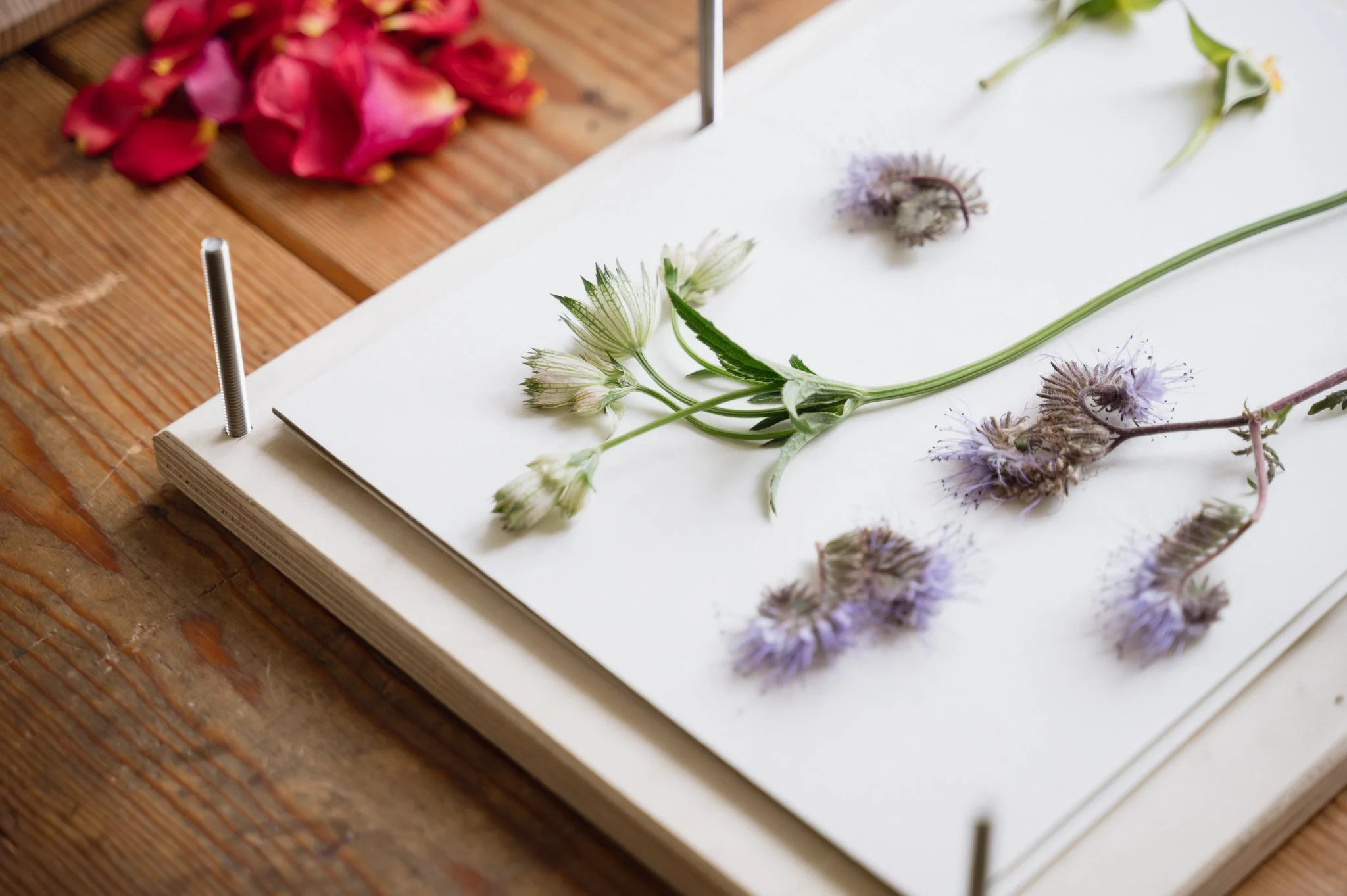Why Did My Pressed Flowers Go Mouldy?
It can be upsetting when you open up a flower press only to find the flowers have gone mouldy during the pressing process. There are lots of factors that can cause mouldy pressed flowers.
It’s really important to use the right equipment for flower pressing, as it will give you a much better chance of achieving lovely pressings. A flower press that is fit for purpose (sturdy and strong) is far more likely to work well. The most important piece of equipment for reducing the risk of mould is the paper you use in your flower press. I always recommend using quality blotting paper - it is specifically designed to draw out moisture, so is very good at drying out the flowers as they press. If you use normal paper, it won’t be as effective at removing moisture, which increases the risk of mould.
The varieties of flowers you are pressing should also be considered - simple flowers that don’t contain a lot of moisture are far better suited to flower pressing than thick ‘juicy’ flowers that will naturally contain a lot more moisture. If you press buttercups, violas or individual flower petals, you are likely to get good results; if you press whole dahlias, whole roses or whole peonies, they are generally too thick and have too many layers of petals and there’s a high risk of mould as they can’t dry out quick enough.
Climate also has an impact - if you are pressing flowers in a very humid climate, the drying process will be slower, and therefore the risk of mould increases. Here in the UK, the climate is favourable for flower pressing (the flowers can take a little longer to dry out during the colder months of Winter).
If you do find mouldy flowers when you open your flower press, don’t worry, instead try to use it as a learning experience. Even expert pressed flower artists get the occasional mouldy flower; it’s a normal part of flower pressing. If you do find mould, make sure you discard the paper you used as it will have mould spores on it so can’t be reused. Don’t be disheartened, and next time experiment with different flowers, or using extra layers of blotting paper to draw the moisture out quicker.

